Every karma (An act) must be performed correctly by understanding the science of Spirituality underlying it. If the traditional rituals like the Religious festivals, Holy festivals and vrats are performed as karma instead of as a duty, that is, by understanding its Divine base, the individual’s soul energy is activated and it attains contentment. This article explains the vrat rules to be followed by those undertaking vrats. Abiding to these vrat rules is of utmost importance to derive Spiritual benefits from the vrats.
1. Vrat Rules to be followed by those undertaking vrats
A. The need for foresight: The freedom fighter Swātantryaveer Sāwarkar has said, “I did not undertake this vrat blindly”. This is absolutely true. A vrat should never be undertaken blindly. Lack of awareness and ignorance will not do here. One should accept a vrat knowingly.
B. Strict compliance: Any vrat should be followed meticulously. Once undertaken, we should not think of the hardships we may have to face when observing it.
C. Completion is necessary: If one begins a vrat, he should complete it; because if carelessly given up in the midst, the effects can be disastrous. This is what the scriptures preach. They also recommend ‘penance’ if there is a break in a vrat, either deliberately or by accident. In today’s times, penance itself is equivalent to repentance. If a vratis broken by accident, one should fast for three days and men should shave off their hair and begin the observance once again.
D. Rules
-
Brushing of teeth: One should not brush the teeth on the day of a fast or on a shrāddha (Special rituals performed for the departed ancestors) day. If needed, then gargling with water, rinsing the mouth with water twelve times or cleaning the teeth with mango leaves, dried twigs or fingers is permissible.
-
Bathing: One should bathe everyday. It is necessary to bathe after passing flatus, crying or laughing loudly, losing temper, touching a rat or a cat or lying.
-
Clothing and ornaments: When observing a vrat we should use gandh (Sandalwood paste), flowers, a chain of beads and clothing and ornaments to suit the vrat. When performing pūjā (Ritualistic worship) or a sacrificial fire etc. as part of a vrat, we should use an upper garment in addition to the lower garment. It is inappropriate to use more than two garments when reciting a mantra, chanting the God’s Name, performing a sacrificial fire etc. This rule is made to prevent distress due to the heat generated in the body because of the mantra or chanting the God’s Name. Neither a man nor a married woman should wear red clothing and fragrant white flowers throughout the vrat. A Brāhmaṇ should wear white coloured, a Kshatriya saffron coloured, a Vaishya yellow coloured and a Shūdra either blue or any other coloured clothing. Wearing a dhotī (Piece of cloth tied around the waist which covers the lower part of the body) with three folds is ideal. A Brāhmaṇ wearing a dhotī is called Muniraj. It is inappropriate to wear a dhotī by tying a knot.
-
Chanting, eating meals and urination and defecation should be done at the appropriate time.
-
Āchaman : If one undertaking a vrat is entrapped in temptation or thought and forgets to do āchaman, then his vrat is in vain. Even if one has done āchaman earlier, one should do it again while bathing, eating or drinking or after returning home.
-
Pūjā of the Deity : Pūjā of the Deity for whose sake the vrat has been undertaken should be performed. We should chant the Deity’s Name, meditate, listen to His / Her stories, worship, perform kīrtans (Narration of the glory of God through stories punctuated with devotional songs) and read religious texts.
-
Meals –
-
Should be limited. We should even avoid drinking water several times.
-
Havishyann (Food suited for offering in the fire): Water, fruit, roots, milk, a Brāhman’s wish, intake of medicines and a Guru’s command do not pose any obstruction to a vrat. Kheer made for offering in a sacrificial fire, food collected by asking for alms, javas (a cereal), green leafy vegetables (bottle gourd, cucumber, fenugreek etc.), cow’s milk, curd, ghee, radish, mango, pomegranate, sweet lime, tangerine, banana etc. are food items suitable for eating during the vrat.
-
Salt, salty foods, honey and meat are prohibited.
-
Women and the Shūdra class are not entitled to fast for more than two days.
-
-
Restrictions
-
One should refrain from doing the following things –
-
Application of oil to the body and head, sabhyangsnan,
-
Eating betel leaves,
-
Application of fragrant substances to the body,
-
Actions which will decrease physical strength or aggravate mental disorders,
-
Anger, greed, attachment, laziness,
-
Smoking,
-
Sleeping during the day, and
-
Stealing.
-
-
One should observe celibacy
-
Travelling in a vehicle is prohibited : One performing a vrat should not travel on a bull, camel or donkey (meaning, not use any vehicle).
-
Careful cultivation of virtues: Carefully cultivate qualities like forgiveness, truthfulness, compassion, generosity etc.
-
Pūjā of the Guru, Deities and Brāhmans should be performed and they should honoured.
-
Brāhmans should be offered meals.
-
Married women and virgins should be offered meals.
-
Cattle, wealth, ornaments etc. should be donated.
-
Offering meals: The blind, poor and crippled should be offered meals. The Holy text Kalikā-purāṇ states that on the day of the vrat, delicious, sumptuous food and drinks should be generously distributed amongst orphans, the blind and the crippled. The ‘Bhavishyā-purāṇ recommends that one following a vrat should offer meals to the blind, needy and helpless according to his capabilities.
-
Ashouch (Impurity resulting from birth, death etc. in a family) : If one has made a sankalp (Resolve) to follow a vrat days in advance and at such time suddenly Ashouch occurs due to birth or death in the family, then it does not become an obstruction to the observance. If during the period of the vratt here is sutak then to get out of it, donation and pūjā have been recommended. In several vrats, all the three, that is, donations, Dharma and pūjā are included. In the vrats of Gaṇēsh Chaturthī, Anant Chaturdashī and Ark-saptamī, pūjā of the Deity of the vrat, van (gift to a Brāhmaṇ or a married woman on religious occasions) and donations are advocated. Even if these vrats are interrupted by an ashouch, they can be continued; however donations should not be given, nor pūjās
-
Even if a woman gets her menses during a vrat, it does not pose any obstruction to her observance.
-
E. Vrat, the essence of life for Rāmāchārya! : Rāmāchārya, a Sanskrut scholar of the past, adhered diligently to the scriptures. His trust in scriptures was remarkable. He was very scrupulous in discharging religious duties. During illness he used to take every precaution to ensure that the medicine being taken by him would not disrupt his religious vows. For many years, as part of his vow, he had given up consuming sugar. He would be ill for long periods. Even when burning with fever and unconscious, if the doctor administered him a sweet medicine, he would sit up immediately, screaming “sugar, sugar!” and spit out the medicine at once. This behaviour from a person who had no energy to turn on his side by himself would stun the doctors. Rāmāchārya’s son said, “He would prefer death; but would not disrupt his vow.” The strict adherence to the vows was indeed the essence of his life. Firm religious faith can even spur the God Himself to be a humble servant.
2. The vrat rules governing a vrat
A.The commencement of a vrat : On the day of the vrat after waking up two ghaṭikās (An ancient Bharatiya measure of time, 1 ghaṭikā = 24 minutes) before sunrise, one should perform the daily ablutions and bathe. Without eating anything one should offer prayers to the Suryadēvtā (Sun Deity) and the presiding Deity of the vrat and expressing one’s sankalp, begin the observance.
B. The sankalp : Standing facing the north and holding a copper vessel (filled with water) in the hand, one should start by making a sankalp for the vrat. The northern direction is favourable for spiritual progress. As against this, DeityYama’s region is towards the south.
-
Importance : It is necessary to make a sankalp when commencing and concluding a vrat. If this is not done, then the observance is not fruitful. If the sankalp is not made, then the Deity could get confused about the result to endow on the one performing the observance. For example, the vrat of Sola-somvār is one which endows both, Moksha (Final Liberation) and a son. If the sankalp is not made, which result should the Deity bestow? The duty of the one performing the vrat does not end after making the He also has to see to it that the ritual is carried out appropriately to its completion.
-
Giving up the sankalp on the advice of an evolved person : As part of a vrat, Abhishēk was being offered to bring rain. After being told by Mouni swami, the children told Shastri buva and others to stop the Abhishēk. Shastribuva replied, “How can I stop the Abhishēk started with a sankalp?” and he continued it. In response Mouni swami said, “See, how people trouble Deities even when they are seated in a meeting. Hence, it will not rain.” In short, when an evolved person advises, one should give up the sankalp associated with a vrat. This does not generate any sin. Also, how successful will the sankalp of an average person be, when compared to that of an evolved individual? One should remember that an evolved person’s word is always superior to a scriptural lore.
C. Pūjā and sacrificial fires : Contemplating on Shrī Gaṇapati, Mātrudēvtā and Panchdēvtā, one should worship them ritualistically. A golden idol of the Deity of the Vrat should be made and worshipped with panchopchar or dashopcharor shodashopchar – pūjā as maybe feasible. The presiding Deity of the month, fortnight, date, day or the lunar asterism becomes the Deity of the vrat. For example, on Pratipada (1st day of the Hindu lunar month) – Agni, on Dwitīya (2nd day of a Hindu lunar fortnight) – Brahma, on Trutiya (3rd day of a Hindu lunar fortnight) – Gouri etc. Pūjā after expressing the sankalp of the presiding Deity is essential.
D. The meal after a fast : The meal partaken of after completion of a vrat by giving up the fast is called parane in Marathi. This food should be tasty and should be eaten only after Mahānaivēdya (Prasād served in the form of a meal, normally after a major ritualistic worship). For instance, when observing the fast of Ēkādashī (11th day of a Hindu lunar fortnight), parane has to be done on the Dwādashī . One should not fast on that day. If one does, it induces sin.
E. Udyapan: After completing a vrat, for its fulfillment one should perform acts such as chanting, a sacrificial fire, pūjā etc. All these together constitute the udyapan. A vrat is almost always done with expectation. Man follows it with a particular motive. If one is able to perform the vrat according to one’s satisfaction, then one feels excessively content. The concluding ceremony is symbolic of contentment, in other words it is the fulfillment of the vrat. After following the vrat completely, one should perform the ceremony according to one’s capacity. Without that ceremony, the vrat is incomplete and is rendered futile. As a result, no benefit is obtained from it. How the concluding ceremony of a vrat should be performed is mentioned in the respective vrat itself.
Reference: Sanatan Sanstha’s Holy Text ‘Holy festivals, Religious festivals and Vowed religious observances’

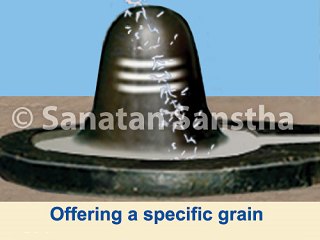
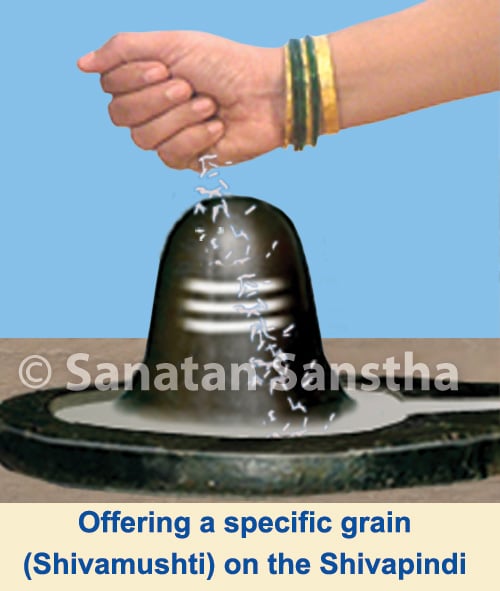
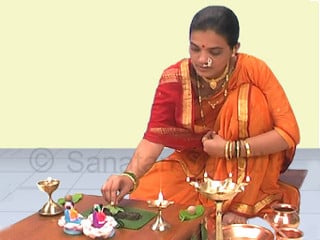 What is a vrat (Vowed religious observance)?
What is a vrat (Vowed religious observance)?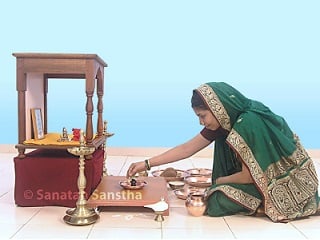 Importance and benefits of vrat (Vowed religious observances)
Importance and benefits of vrat (Vowed religious observances)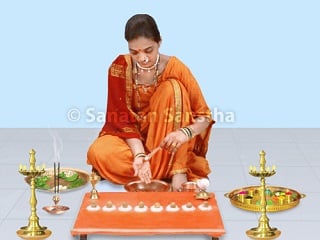 Types of vrats (Vowed religious observances)
Types of vrats (Vowed religious observances)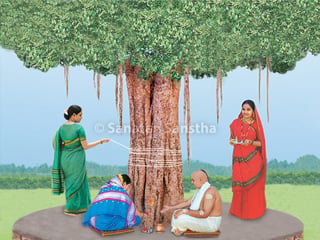 Vat purnima
Vat purnima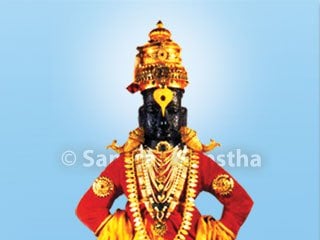 Ashadhi Ekadashi
Ashadhi Ekadashi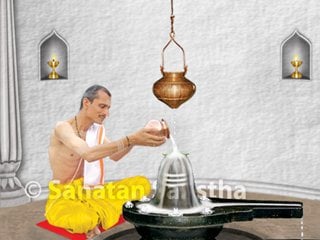 Shravan maas vrats and rituals
Shravan maas vrats and rituals